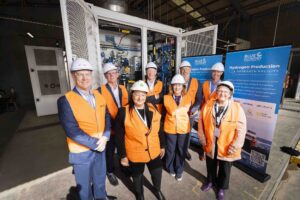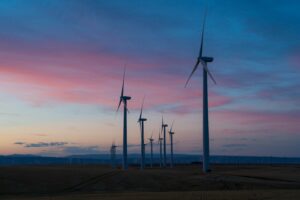A contentious 100-turbine $1 billion-plus wind farm proposed for a remote island in Tasmania is facing a legal challenge from a community group.
The Robbins Island project was in November given permission to operate year-round after a requirement for it to shut down for five months per year during the migration period of the critically endangered orange-bellied parrot was overturned.
The shut down condition had been imposed by Tasmania’s Environment Protection Authority, but was overturned after an appeal by project proponent ACEN Australia.
The Circular Head Coastal Awareness Network, a “diverse group” opposed to the wind farm, on Tuesday announced it had lodged Supreme Court action against the project.
The network is appealing against the decision, made by the Tasmanian Civil and Administrative Tribunal, to allow the farm to operate all year.
ACEN has previously indicated the five-month shutdown would render the project unviable.
Network chair Steve Pilkington said the wind farm was slated for one of the most beautiful and environmentally important areas in Tasmania.
“We have fought this project for the past four years with meagre resources because we feel it is the right thing to do,” he said.
There are several grounds to the appeal, including that the Tasmania Civil and Administrative Tribunal erred in law.
ACEN Australia has previously said the approval to operate year-long came after a comprehensive environmental assessment to identify and minimise potential impacts.
The company has reduced the number of planned turbines and their heights, refined the project footprint and incorporated technology designed to prevent blades hitting birds.
Among conditions placed on the project, ACEN Australia must pay $100,000 for every death of a wedge-tailed eagle or orange-bellied parrot caused by turbines.
The company says the wind farm will create up to 400 construction jobs and up to 65 ongoing roles.
The development includes a wharf and bridge and other infrastructure.
Robbins Island, off the state’s northwest coast, is about 9900 hectares in size and is habitat for several species of migratory shorebirds.
It is home to a population of Tasmanian devils, thought to be free from a deadly facial tumour disease.
The Tasmanian Civil and Administrative Tribunal ruled the 900MW project posed a “very low” risk to the recovery of the parrot and should not be refused on that basis.
Tasmanian Premier Jeremy Rockliff said the decision found an appropriate balance between renewable energy and protecting wildlife.
The matter is expected to appear before the Supreme Court of Tasmania in late February.
The project still requires approval from the Commonwealth.
Source: AAP









